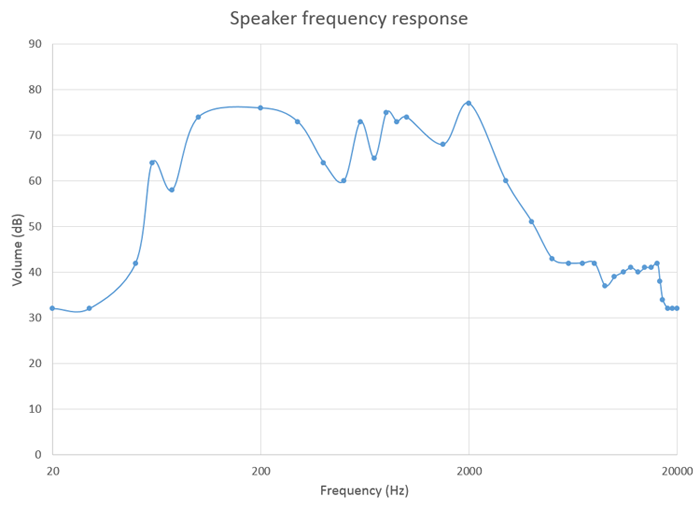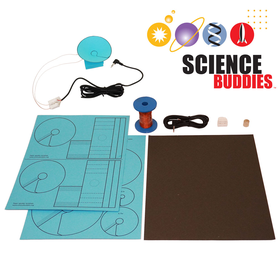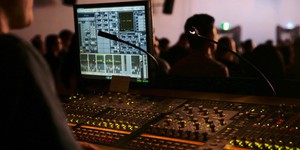Summary
Recommended Project Supplies
If you want a Project Idea with full instructions, please pick one without an asterisk (*) at the end of the title.
Abstract
Whether you have already tried the Science Buddies Build a Paper Speaker activity or the Measure the Frequency Response of a Paper Speaker project, or you just like music and are interested in exploring more about the science of sound, then this project is for you.
You probably know that sound waves can have different frequencies. If not, you can read more about that in the background section of the Measure the Frequency Response of a Paper Speaker project. The range of human hearing is typically about 20 hertz (Hz) to 20,000 Hz. Frequencies at the lower end of this range are typically referred to as bass, the higher end is called treble, and those in the middle are called mid-range. Ideally, a single speaker would be able to play sounds at all frequencies "equally," meaning it would not make certain frequencies sound louder than others. However, this is not the case. Many times speakers are separated into tweeters for playing high frequencies and woofers for playing low frequencies. Why is this necessary?
The reason has to do with a concept called resonant frequency, sometimes called "natural frequency." Every mechanical system or object has a natural frequency at which it "likes" to vibrate. In general, smaller, lighter, and stiffer objects like to vibrate faster than bigger, heavier, and softer objects. For example, imagine "pinging" a small metal object (like a ruler or paperclip) by flicking it with your finger. It will vibrate back and forth very quickly—possibly faster than your eye can see. Now, think about much larger objects, like tree branches swaying in the wind; they rock back and forth very slowly. The same concept applies to speakers—smaller, lighter tweeters will vibrate at higher frequencies, while larger, heavier woofers will vibrate at lower frequencies.A graph of the amplitude of a vibration versus the frequency of the vibration is called a system's frequency response. A good speaker should have a frequency response that is as "flat" as possible, meaning it reproduces frequencies at the same volume at which they were recorded. Otherwise, large peaks or valleys in the frequency response will result in some frequencies sounding much louder or quieter than others. Figure 1 shows an example frequency response for a set of computer speakers.

The example graph shows the frequency response of a set of computer speakers. The graph shows that at a low and high frequency (20, 20000 Hz) the volume level is roughly the same. The frequencies between about 90-18,000 produce a large increase in volume that can fluctuate between 40 and 80 decibels.
Figure 1. Frequency response for a pair of computer speakers. Notice that the x-axis of a frequency response is typically plotted using a logarithmic scale, due to the large range of frequencies for human hearing.
There are many science projects you can do involving the frequency response of speakers. Here are just a few ideas:
- Build your own paper speaker, like in the Science Buddies project Measure the Frequency Response of a Paper Speaker Measure the frequency response by playing tones at different frequencies and recording the volume in decibels (dB) (the procedure for doing this at a single frequency is described in the project), and produce a graph like Figure 1. How flat is the speaker's frequency response? Would you characterize the speaker as a tweeter, a woofer, or a mid-range speaker?
- Investigate how different variables can change the frequency response of a paper speaker. Remember that natural frequency is controlled by the stiffness and mass of an object. What can you change about the basic design of a paper speaker to alter its frequency response? Can you design and build speakers with two distinct frequency responses, one tweeter and one woofer?
- If you have a home stereo system, see if you can look up the frequency response data for the speakers from the manufacturer. Do your own experiments to measure the frequency response. Do your results line up with the manufacturer's claims?
Bibliography
- Mitchel, M. (2005, April 9). Understanding Speaker Frequency Response. Ecoustics. Retrieved September 25, 2015.
- ht-aduio.com. (n.d.). How a Speaker Works. Retrieved September 25, 2015.
- Henderson, T. (n.d.). Sound Waves and Music. The Physics Classroom. Retrieved September 25, 2015.
Materials and Equipment 
Recommended Project Supplies
- Paper Speaker Kit, available from our partner
Home Science Tools. You will need these items from the kit:
- Paper speaker template, printed on cardstock
- Paper speaker cones, printed on cardstock
- 1/2 inch by 1/2 inch neodymium magnet
- 28 AWG enameled magnet wire
- 2-position spring wire connector
- 3.5 mm audio cable with bare wire ends
- Fine-grit sandpaper
- Gather additional materials as needed to answer the experimental question you choose.
Ask an Expert
Careers
If you like this project, you might enjoy exploring these related careers:
Contact Us
If you have purchased a kit for this project from Science Buddies, we are pleased to answer your questions.In your email, please follow these instructions:
- What is your Science Buddies kit order number?
- Please describe how you need help as thoroughly as possible:
Examples
Good Question I'm trying to do Experimental Procedure step #5, "Scrape the insulation from the wire. . ." How do I know when I've scraped enough?
Good Question I'm at Experimental Procedure step #7, "Move the magnet back and forth . . ." and the LED is not lighting up.
Bad Question I don't understand the instructions. Help!
Good Question I am purchasing my materials. Can I substitute a 1N34 diode for the 1N25 diode called for in the material list?
Bad Question Can I use a different part?
Contact Us
Related Links
- Science Fair Project Guide
- Other Ideas Like This
- Physics Project Ideas
- Technology of Art Project Ideas
- My Favorites











